TOURS & PROGRAMS
We have prepared a special program for you to explore the Nakasendo in more depth.
Through guide tours of the “Nakasendo Trail” for a more complete highway trail. And “Shukuba Day Trip,” which invites you to a more authentic experience of the area, using the ‘Shukuba’ – post towns as a base.
Both are special tours with through guides and specific guides who know the area well, and together with the locals, give you a sense of the area and its way of life.
The programs also include elements such as hiking and biking that require physical fitness, as well as experiences that do not require much self-mobility, allowing you to make choices depends on your needs.
Plan your own journey to combine Nakasendo Trail and Shukuba Day Trip with referencing Model Tours to prepare your fruiteful journey!
Long Story Tour
Based on the Grand Story and four episodes, the ‘Long Story Tour’ takes you on a deeper journey into Japan – a journey “Tracing Japan’s origins and its spirituality.”
A journey along the Nakasendo road that crosses the center of Japan. It is truly a journey across the history of Japan.
From the Paleolithic and Jomon Period to the present day. In order to unravel its deep story, we have broken it down into four episodes – faiths and lifestyles, travel and roads, foodways, and crafts and beauty – and have established
a recommended route as a ‘Long Story Tour’ from each aspect.
However, it is also possible to pick up a few bits and pieces. We hope you will choose the trip of your choice based on the themes and episodes that interest you.
Episode 1 : Faiths & Lifestyles – spirits and customs are carried on
Primitive beliefs such as “nature worship” and “ancestor worship” can be seen in the legacies of the Paleolithic and Jomon periods, and are numerous throughout the Suwa Basin. This primitive identity is embedded in the unconsciousness and customs of the people. It can also be seen in the mountain beliefs of Kiso due to the fusion of esoteric Buddhism and nature worship, and the indigenous beliefs of rural villages.On the other hand, people’s beliefs, especially the relationship between Shintoism and Buddhism, and between religion and politics, have developed in various ways since the Ancient Time, leading to today’s cultural practices.
The Nakasendo Trail is a basic experience for visitors to the Nakasendo area.
This is a guided tour that allows visitors to enjoy the experience of walking along the road connecting the Shukuba (post towns) and accessing the local nature, history, culture and lifestyle of the residents by each regions, led by a Through Guide.
Here we present a special one-week (7-day) journey between Shimosuwa-juku and Mitake-juku as a model tour.
Enjoy the changes of landscapes and cultures of Suwa, Kiso, and Higashi-Mino and spend a special journey in Japan.
We can offer both tours from the east (Shimosuwa) and from the west (Ontake-juku).
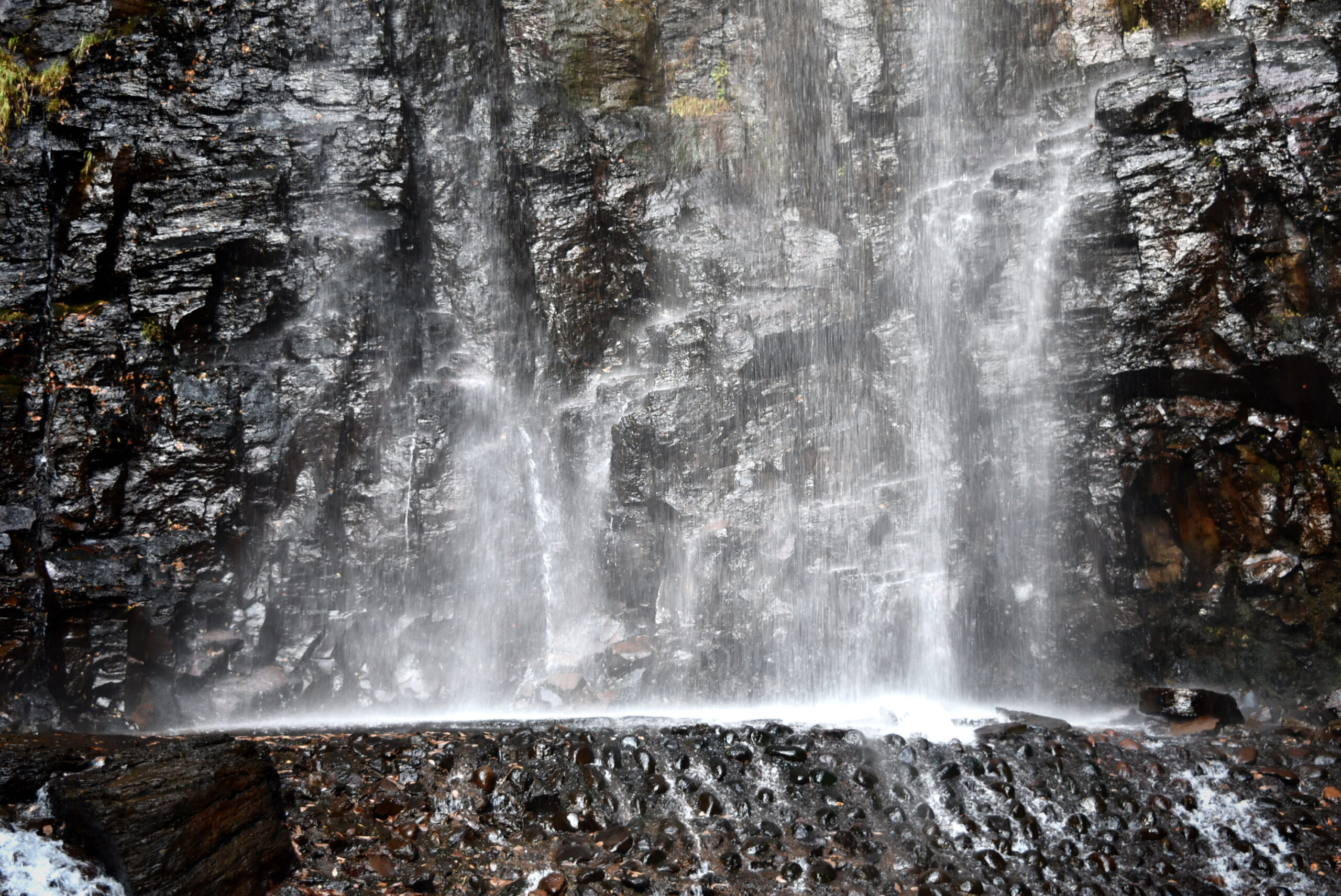
Episode 2 : Travel & Loads – Tracing in the footsteps of travelers
Ancient highways have been formed and maintained in various ways throughout the ages as an integral part of people’s movement and logistics.In mountainous areas, there have always been steep mountain passes, where cultural influx and the creation of cultural uniqueness have been brought. The stories of travelers existed on their arduous journeys, as did the hospitality offered at the towns.
The Nakasendo has a complex history of beliefs that differ from region to region. It can be said that local beliefs influence diverse elements such as festivals, people’s values, or architecture, and shape the local way of life.
In Suwa, the culture is a complex fusion of the Aminism that has continued since the Jomon period and the lifestyle that integrated wild meat diet with it, the subsequent introduction of Shintoism, and the Onbashira Festival that has been carried on since the medieval period.
In Kiso, a steep mountainous region, mountain worship and the Shugen (mountain asceticism), a fusion of Buddhist practice and nature worship, has developed especially in Ontake Mountain.
In Higashi-Mino, especially in the northern part of Nakatsugawa, there are many Shinto believers due to the influence of the abolition of Buddhism in the bottom of Edo period. In addition, the remains of an ancient ritual mechanism, which is rare in Japan, have been excavated at the Misaka Pass on the Tosando Route.
Furthermore, trees in Kiso and Urakiso area (which locates south east and west part of Mt. Ontake) are used as sacred trees for the relocation of the Ise Jingu shrine, one of the most important Shinto shrines in Japan.
On all the roads, visitors can see a variety of stone statues reflecting the stories of local people and travelers.
Of course, seasonal festivals exist in the villages, offering thanks and prayers for community unity and the bounty of nature, and performing arts such as ji-kabuki and ningyo joruri plays are dedicated to the gods and also enjoyed by the local people themselves.

Episode 3 : Mountainous Foodways and People’s Lives
Under the sometimes rich and sometimes harsh mountain environment, our ancestors found “seasonal foods” and “preserved foods” according to the seasons, and incorporated the wisdom of daily life into their food customs. Visitors can also learn and experience how the Japanese foodways (Washoku) was shaped by various influences, such as logistics, temples culture, and samurai warriors lifes.
Despite the commonality of mountainous areas, the food and beverage culture, lifestyle culture, and architecture created by the different natural and geographical environments of each mountain passes, is one of the attractions of the Nakasendo.
The Nakasendo is also a dividing line between the north and south, and the foodstuffs from the Pacific Ocean and the Sea of Japan carried along the road have created a food culture that goes beyond the foodstuffs only in inland areas.
The wisdom of people’s rich lifestyles is wrapped up with the joy of living through hands-on activities such as gastronomic experiences, farm stays in villages, and visits to food-related factories.
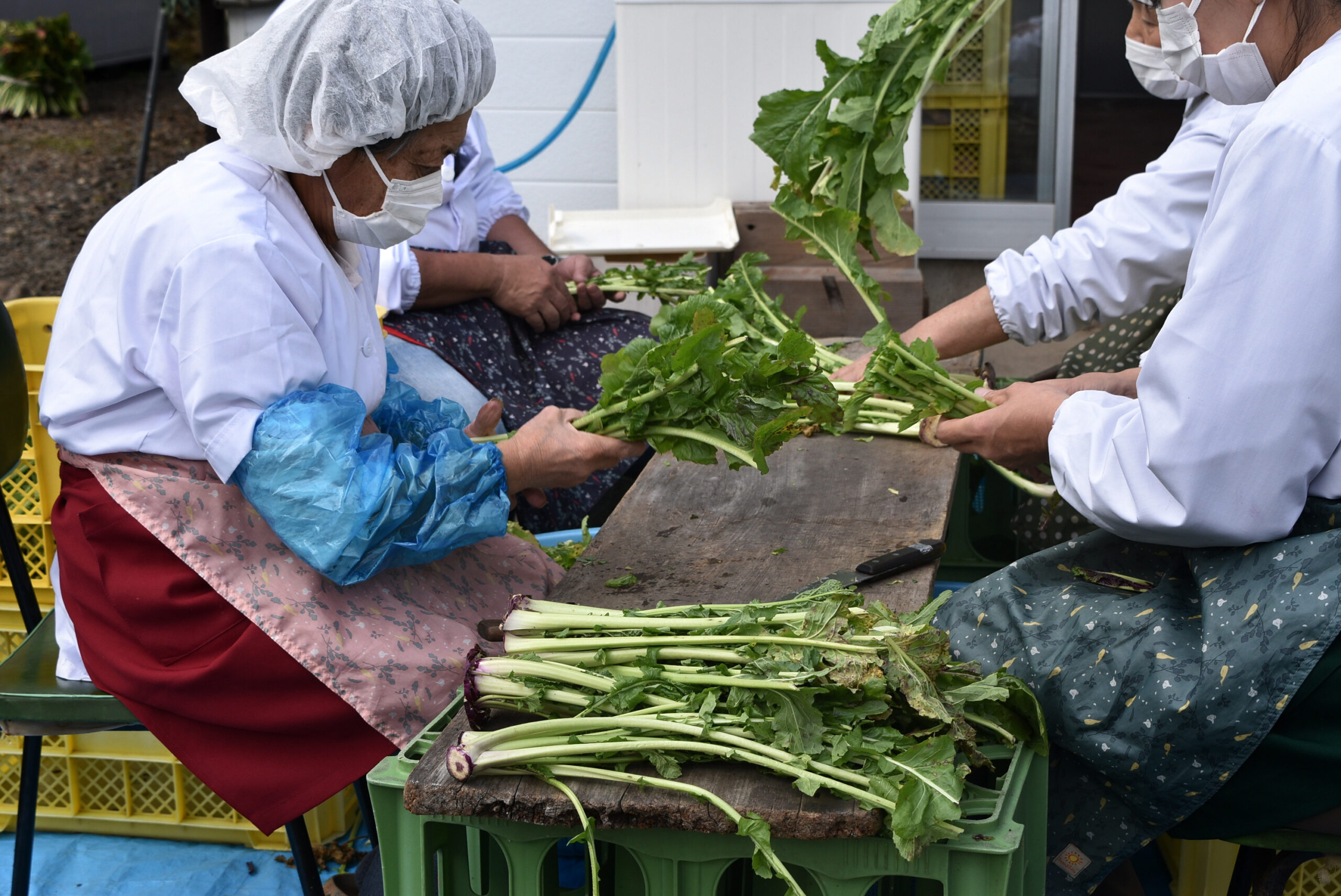
Episode 4 : Traditional Crafts and Japanese Beauty
The mountainous region, which appears to be a harsh environment, also provides the conditions for the construction of advanced and rich traditional crafts through the natural resources provided by the natural environment and the hands of people. Wooden crafts using ‘Kiso-Goboku’ (five varieties of woods), potteries using the blessings of the granite belt and Lake Tokai. Access to all kinds of crafts and the beauty of Japan within them.
Despite the commonality of mountainous areas, the food and beverage culture, lifestyle culture, and architecture created by the different natural and geographical environments of each mountain passes, is one of the attractions of the Nakasendo.
The Nakasendo is also a dividing line between the north and south, and the foodstuffs from the Pacific Ocean and the Sea of Japan carried along the road have created a food culture that goes beyond the foodstuffs only in inland areas.
The wisdom of people’s rich lifestyles is wrapped up with the joy of living through hands-on activities such as gastronomic experiences, farm stays in villages, and visits to food-related factories.
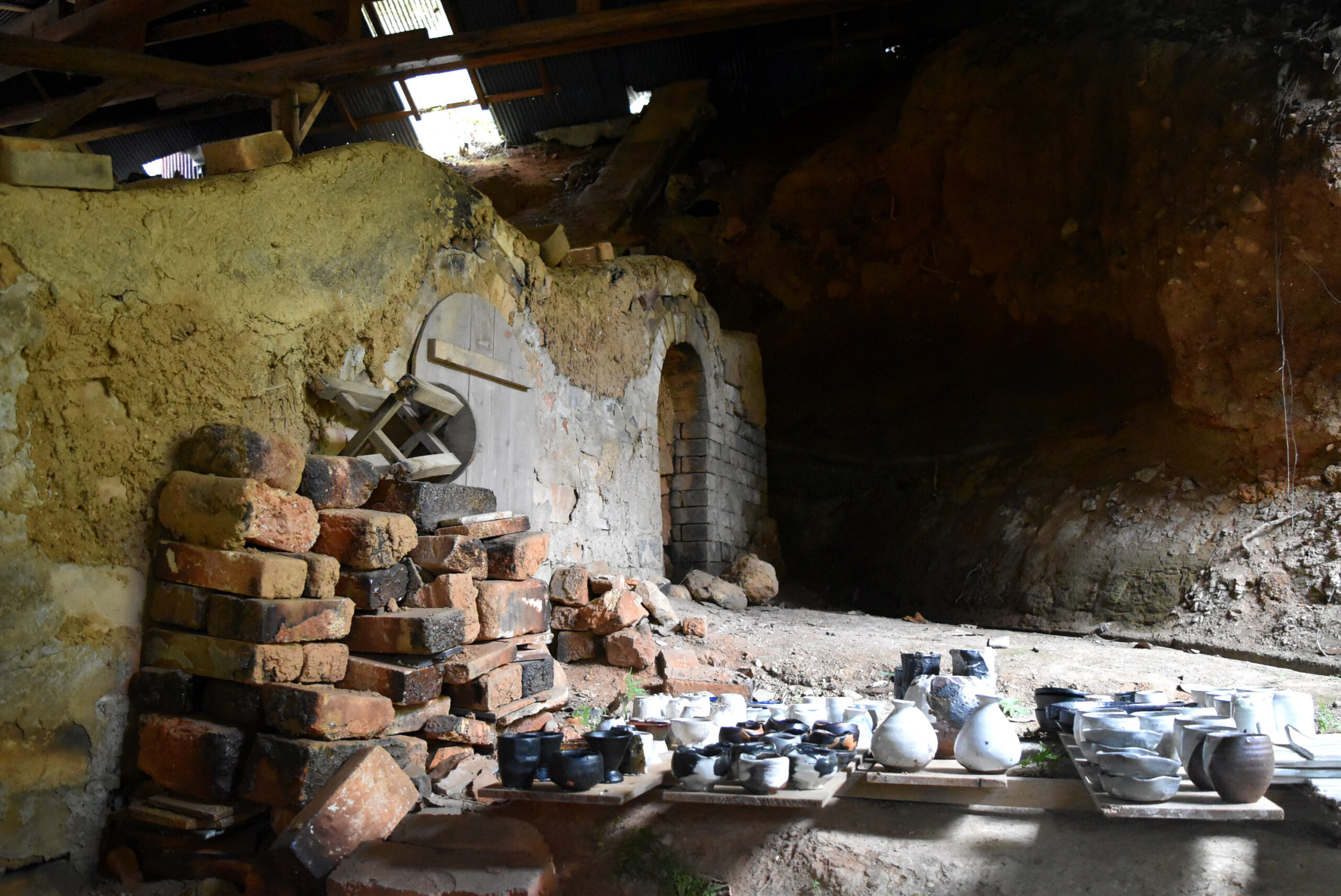
Nakasendo Trail
Nakasendo trails and other trails along the ancient highways with a guide.
The Nakasendo and other old highways pass through various areas in the mid-mountainous region, leaving behind the footprints of different eras and travelers.
With a trail guide, this special experience can be experienced in a deeper and more engaging way.
Nakasendo – Shimosuwa to Seba.
The journey begins with hot springs and wine.
The journey begins with a hot spring bath in Shimosuwa-juku.
The first obstacle is the Shiojiri Pass, which will sap your energy if you walk up hurry.
At the peak of Shiojiri Pass, there is Shio-Mine Park, from which you can view the entire Suwa Basin. This beauty was depicted by Keisai Eisen, an Edo period painter, and is included as an ukiyoe in the book “Kiso kaido 69tsugi” (The 69th post towns of the Kiso Highway).
Descending Shiojiri Pass, you will come to Shiojiri-juku. The area between Shiojiri-juku and Motoyama-juku is a wine grape production area, and wine can be enjoyed here. Then, you will be heading toward the narrow valley road of Kisoji.
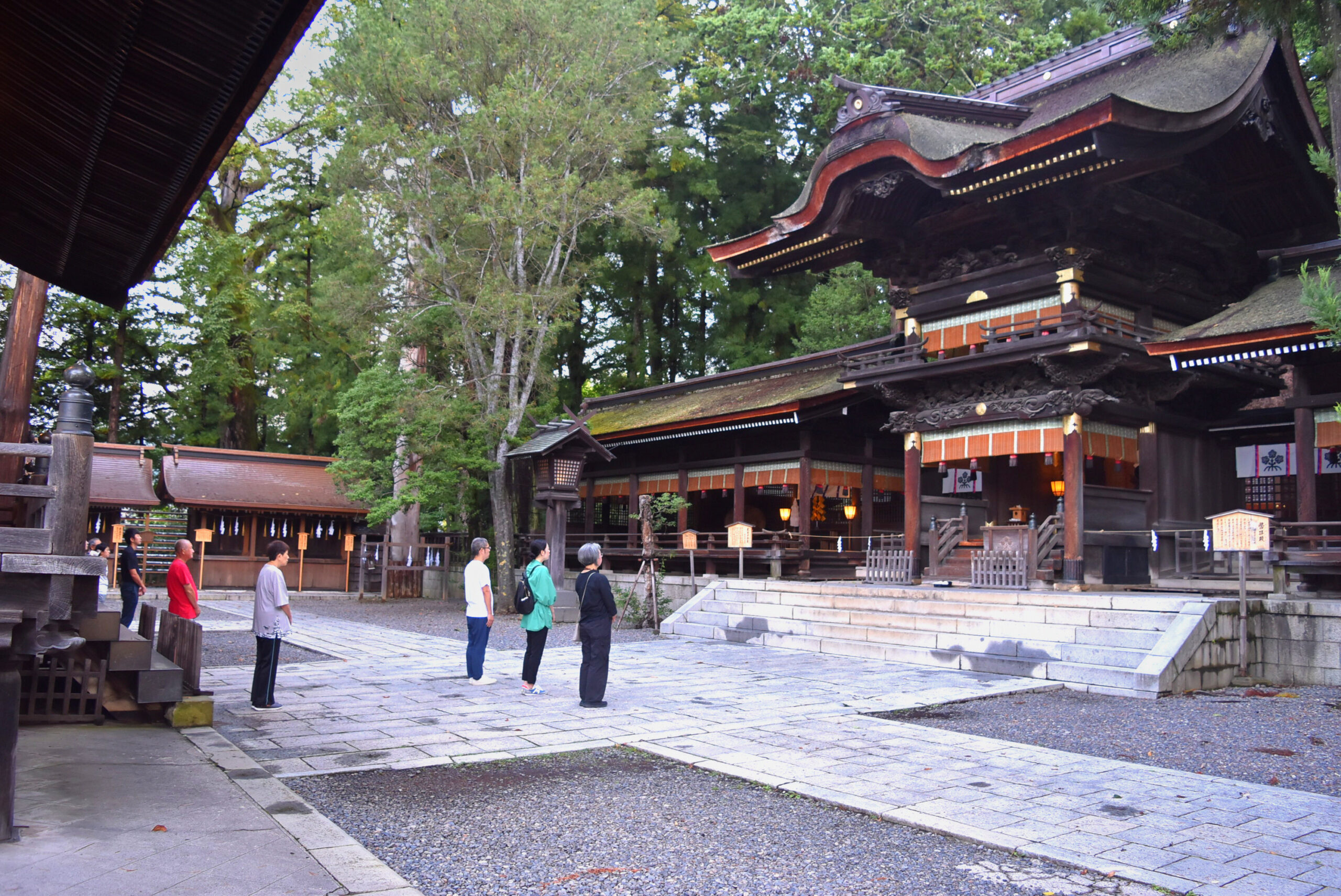
Nakasendo – Climbing Wada Pass.
One of the most difficult places along the Nakasendo, and an important obsidian production center in Suwa’s history.
Another option based in Shimosuwa-juku is a trail up Wada Pass, which is located north (toward Edo) on the Nakasendo Road.
The trail starts at Nagakubo-juku, heads to Wada-juku, and then to Wada Pass.
The climb over the pass is especially difficult in winter, and it is understandable that this was considered one of the three most difficult sections of the Nakasendo route.
However, the beautiful trail continues. The rows of thick pine trees, the peaceful rural scenery, and the magnificent Honjin (main lodge) of Wada-juku are also beautiful.
Climbing up the last steep slope, we reach the peak of Wada Pass, which is 1531 meters high.
The area around Wada Pass is known for its abundance of obsidian, a black, glassy volcanic rock. It is known that obsidian was distributed throughout Japan as far back as the Jomon period (more than 10,000 years ago).
As you descend the Wada Pass, you will come across places where obsidian is scattered and various spots related to Suwa’s religious beliefs, such as “Onbashira” festival.
Then you will reach Shimosuwa-juku. After visiting the shrine (Harumiya and Akimiya), sake at the brewery and hot springs at the inn await you.
Hida-Kaido – Ancient Mountainous Route and Kiso-uma horse.
Road connecting Hida Takayama and Kiso, older than the Naksendo from the Middle Ages, and flourished as a production center of Kiso horses..
Hida Kaido is the name given to several roads connecting Hida Takayama to the Nakasendo Road. These include the roads connecting Kiso (Fukushima-juku) to Hida, Nakatsugawa-juku to Hida, and Ota-juku to Hida.
Among them, the Hida road in Kiso, also called Kamakura road because it was the road connecting to Kamakura in the Middle Ages, is a more profound road.
It passes through the northeastern part of Mt. Ontake, crosses Kaida Kogen highland and Ootaki, and approaches Kiso. It was a familiar road of Kiso Yoshinaka, who ruled this area at that time.
The northern part of Ontake is a natural environment vegetation such as Ichii (Japanese Yew) tree and white birch, that is different from the vegetation such as Kiso cypress under the heavy rain fall area in the southern part of the mountain. And in addition to Jizo statues related to the road, many stone monuments related to Ontake worship can also be seen along the road.
Kiso horses, one of Japan’s native horses, have been bred in this area since ancient times and have been used for logistics, human transportation, and in battle.
Around Kaida Kogen highland, one can also see the footprints of wealthy merchants who made their fortunes by raising and selling these Kiso horses.

Shitakaido – From Oi to Mizunami toward Nagoya.
Trace the main road connecting Nakasendo Oi-juku and the Nagoya.
The Shita Kaido was the road connecting Oijuku on the Nakasendo Highway to Nagoya, and was an important road for various human flows and logistics east of Oijuku, as well as for distribution to and from the large city of Nagoya.
The eastern part of the Shita Kaido covered the Higashi-Mino (eastern part of Mino) area, which is one of the most important ceramic production areas in Japan. For example, Toki City produces about half of all ceramics calculated in Japan.
Historically, the development of ceramics in this area began in the 8th century with the spread of pottery production from the Higashiyama and Sanage kilns in suburbs of Nagoya to the Higashi-Mino area, where weathered granite was stored in a saltwater lake called Tokai Lake, forming a huge layer of ceramic clay.
Most famously, Momoyama ceramics such as Kizeto, Setoguro, Shino, and Oribe were developed and produced in the bottom of Muromachi period (16c.), and played an important role in the development of Japan’s unique artistic culture, including the tea ceremony.
A stroll along the lower highway and enjoy a day trip about ceramics, as well as visiting craft beer and sake breweries along the highway is also a recommended way to enjoy the area.
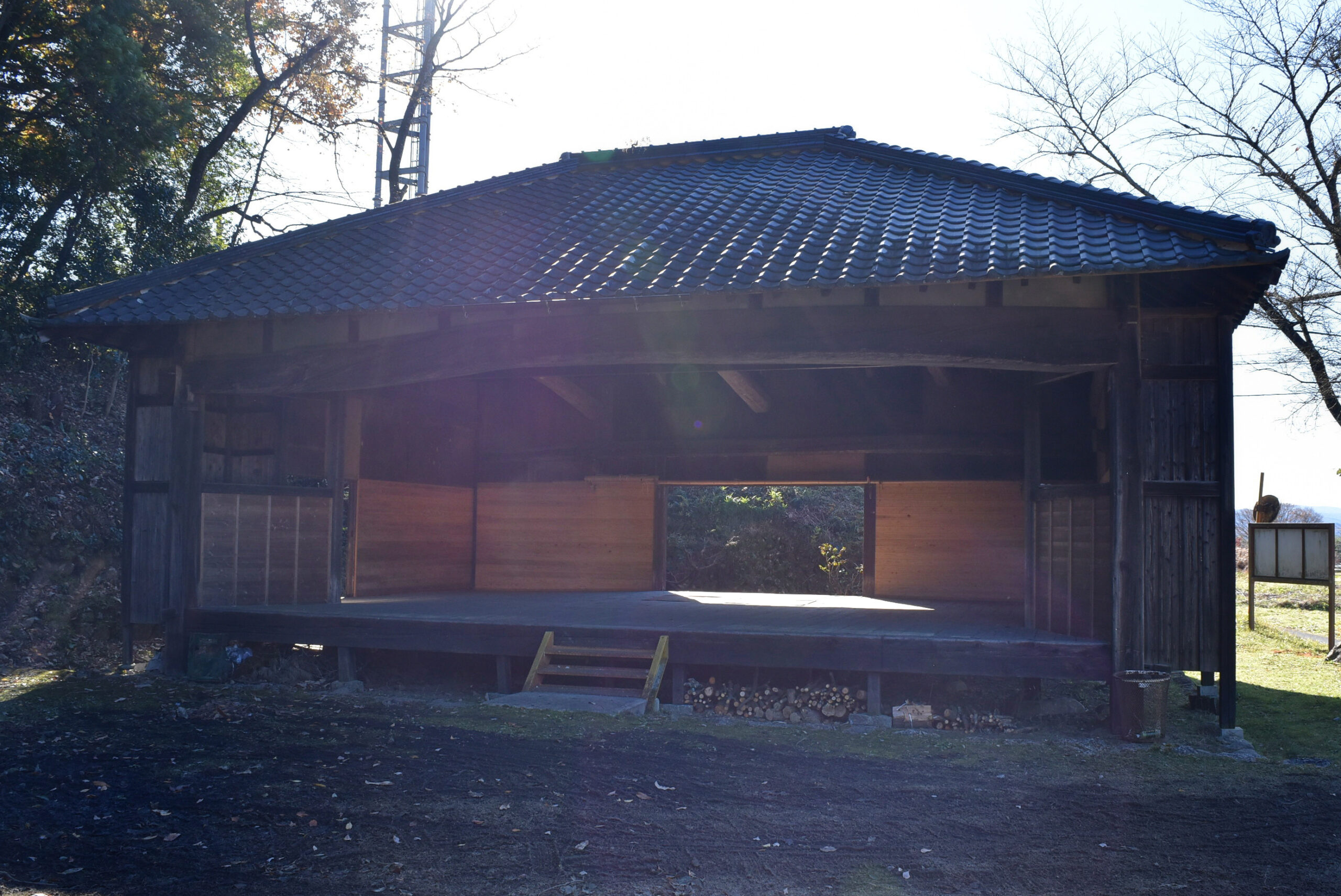
Shukuba Day Trip
Programs to access deeper experience of areas base on post towns.
Shukuba Day Trip offers a variety of programs that allow visitors to enjoy deeper local experiences of the area while based on Nakasendo’s post towns.
We recommend to stay at the Shukuba for a few days and experience the culture, history, industry, and local lifestyles of the areas along the Nakasendo way.
Shimosuwa|下諏訪宿
Shimosuwa town
Shimosuwa Day Trip.
Trace the beliefs and lifestyles of the people of Suwa through a complex historical process, from the Jomon period to the present day, as you visit archaeological sites, with a local guide.
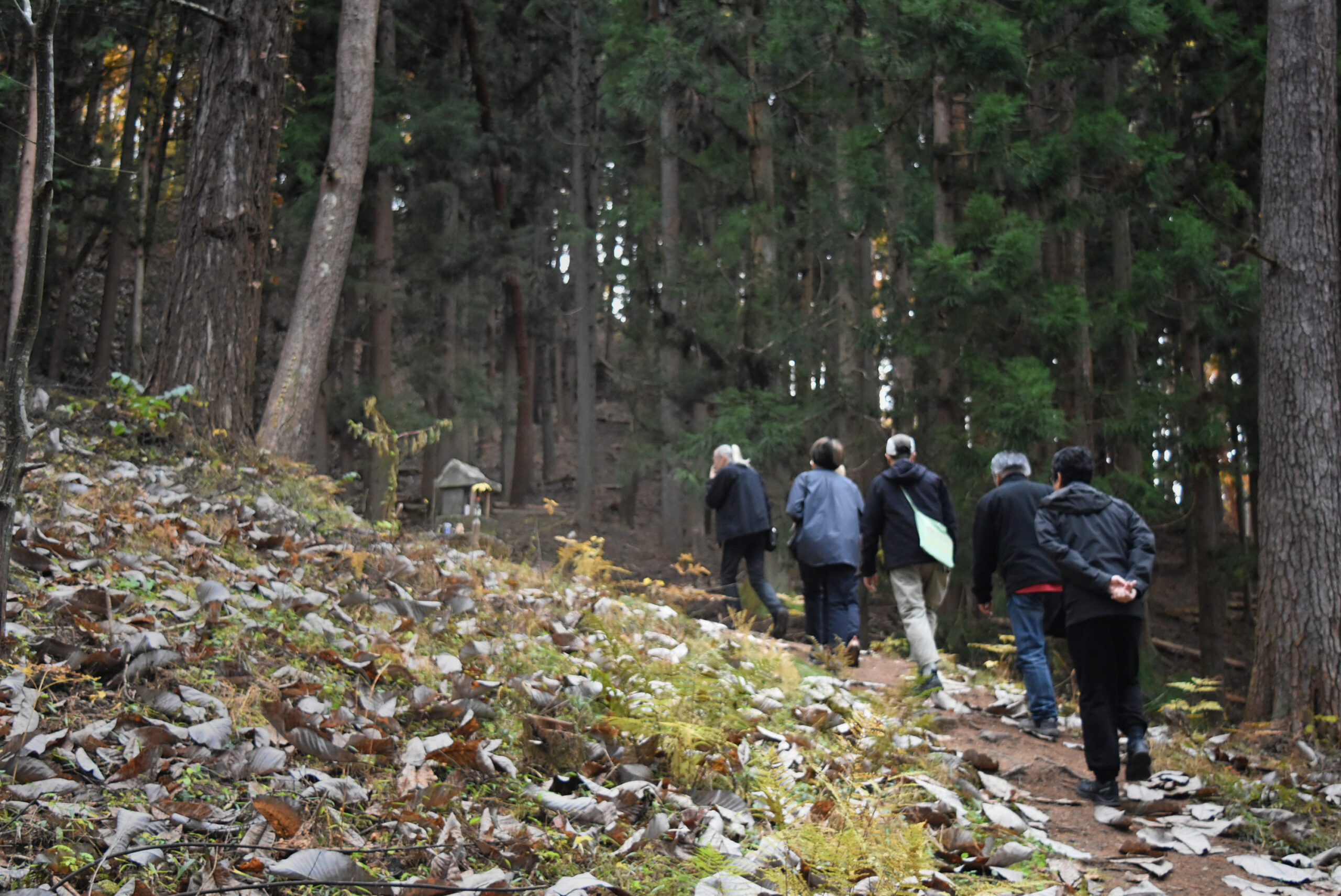
Special hospitality by the head of the Iwanami family at the Shimosuwa-juku Honjin.
Experiencing Japanese rural lifestyle with farm stay, guide walk, and food experience in the Sakaori Terraced rice paddies.
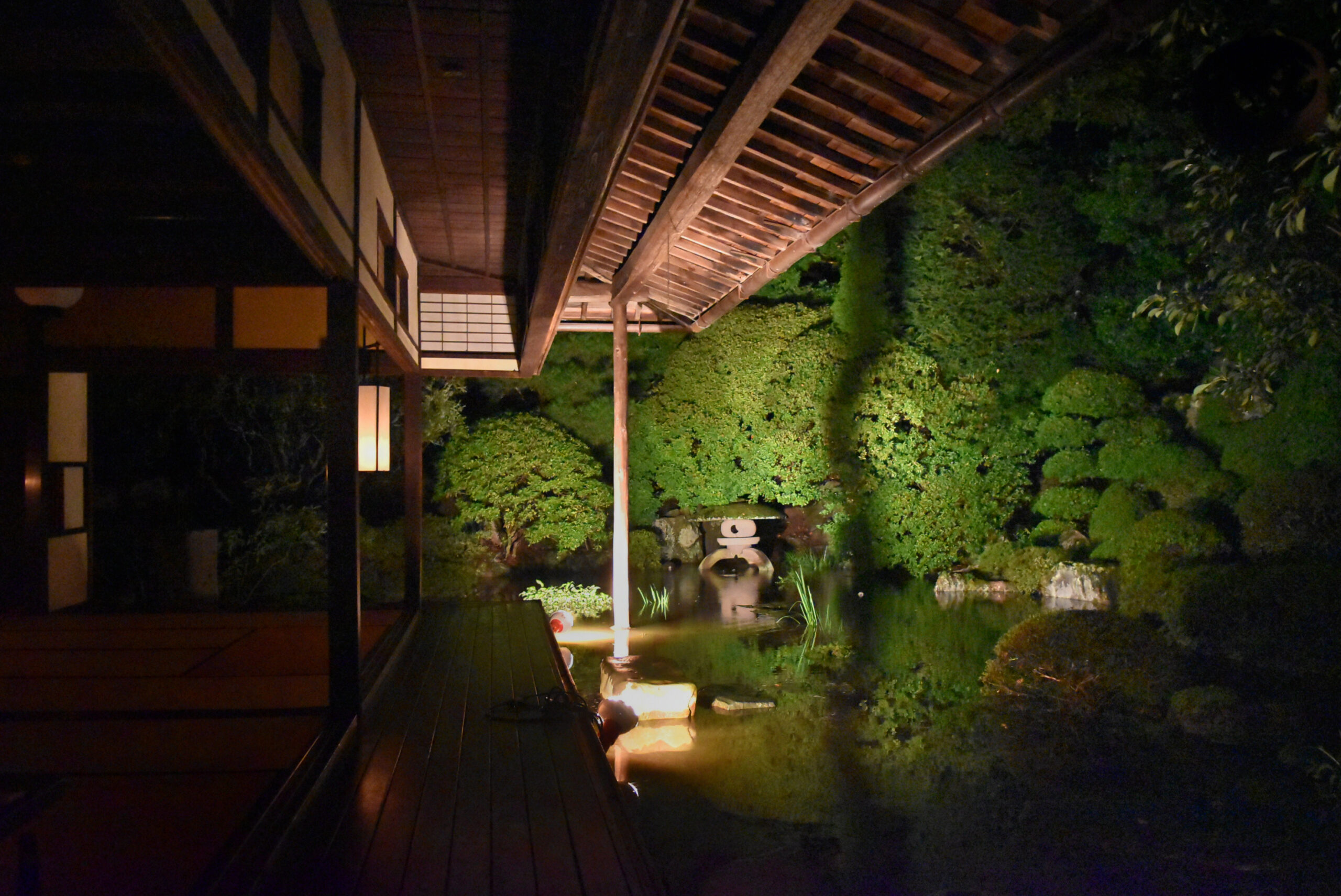
Shiojiri|塩尻宿
Shiojiri city
Special Winery Tours.
Experiencing Japanese rural lifestyle with farm stay, guide walk, and food experience in the Sakaori Terraced rice paddies.
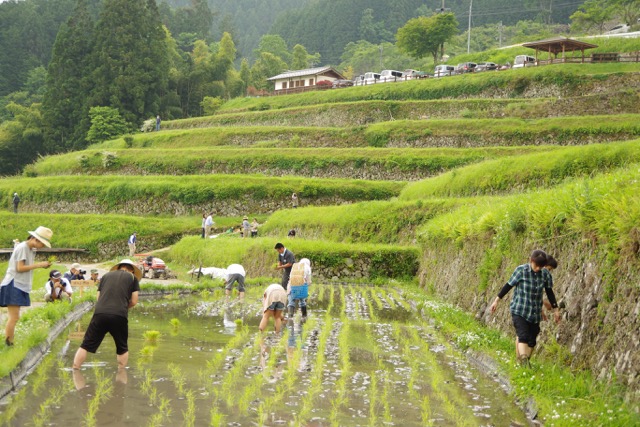
Narai|奈良井宿
Shiojiri city
Lacquer Ware Experience and Tour in Kiso Hirasawa.
Experience the advanced and high quality Kiso lacquerware made from Kiso wood, a traditional Japanese craft that will last a lifetime.
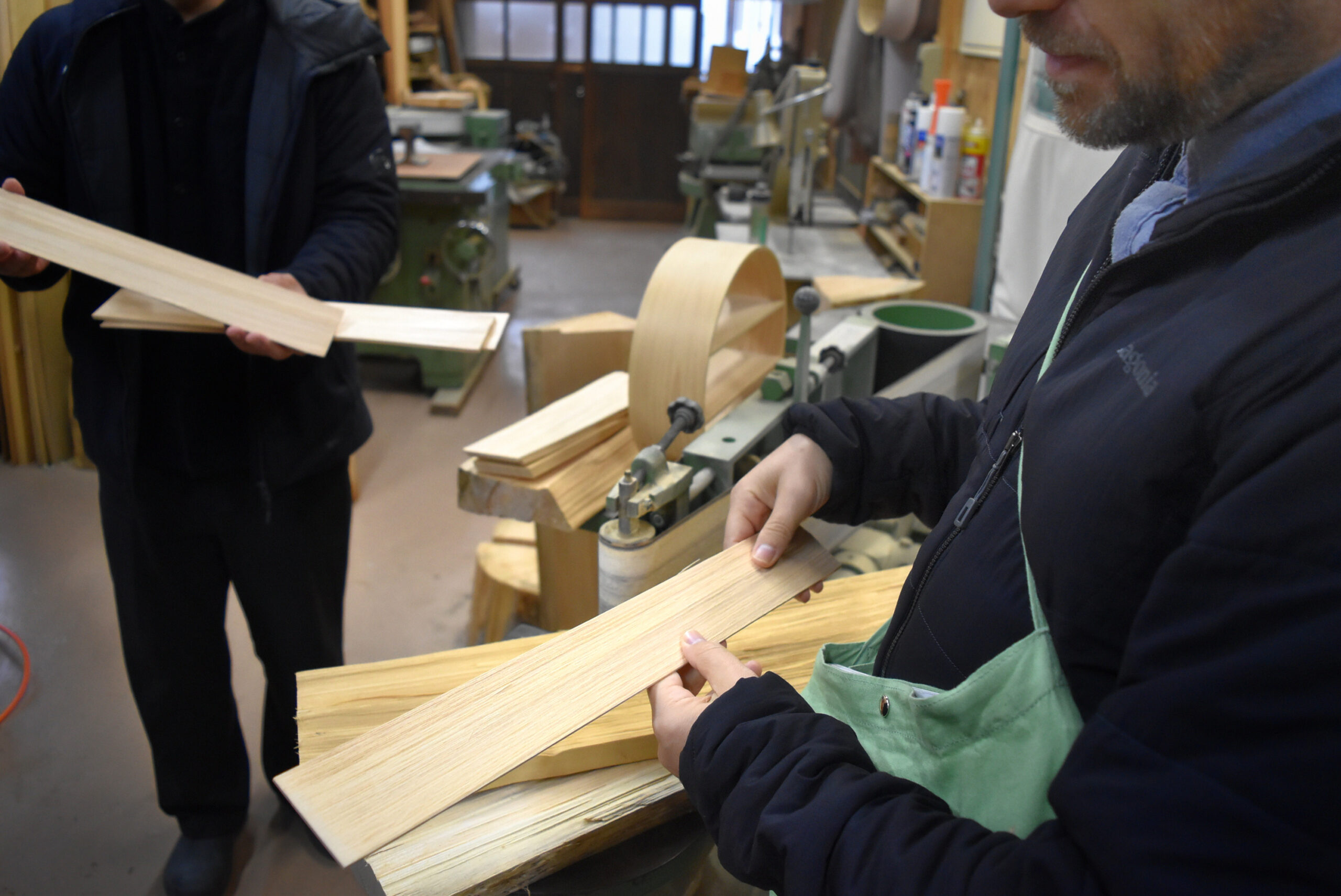
Fukushima|福島宿
Kiso town
Rice cultivation and Sake production, and the gastronomic experiences in the midlands and mountainous area.
Invitations to visit the brewery at Nakazen Sake Brewery and to visit the home-grown farm. And gastronomy experience with local ingredients. The adjacent miso brewery Koike Koji shop will also be featured.

Experience about Ontake worship and Shugendo.
Special tour to experience Shugendo and mountain worship in Otaki, located at the foot of Mt. Ontake

Nojiri|野尻宿
Kiso town
Local guided trail through the Kakizore Valley.
A guided walking tour along an area of the emerald blue Kakikoshi River, one of the water sources of the Kiso River. Visitors will be exposed to the natural environment, people’s lives, and the culture of wood.

Atera Valley – Camping in the bluest area in Kiso.
This is a special tour to experience Shugendo and mountain worship in Otaki, located at the foot of Mt. Ontake

Tsumago|妻籠宿
Nagiso town
Experience a traditional woodcraft culture called ‘Rokuro-zaiku’.
Heading south from Tsumago-juku to the mountainous area, there is an area with a concentration of rokuro woodworking workshops as the home of rokuro-zaiku. In this area, where craftsmen called “mokjishi” are said to have migrated to take advantage of the abundance of lumber, visitors will learn about the delicate rokuro woodworking.

Nakatsugawa|中津川宿
Nagiso town
Tracing the Tousando Road and the Misaka Pass Ruins and remembering the ancient travelers.
Among the Tousando, an ancient highway, the Misaka Pass route from Ochiai to Yubunazawa, then to Misaka Pass and Achi village is a difficult one, reaching an elevation of 1,569 m above sea level.
Travelers from Kyoto and the other western area (where was already governed) offered ceramics, jewelry, and other objects here to pray for the safety of their travel, as the journey to unknown lands continued from the point where they crossed this pass.
A guided tour will take you on a trail along this historical road.

Local guided tours to introduce the culture of Japanese sweets, tea, and local kabuki at the post town.
In the area around Nakatsugawa-juku, chestnuts were widely produced in the basin topography at the foot of Mt. Ena, and local people enjoyed processing them into confections.
The hospitality culture of the post town and the cultural influx from outside also gave birth to a temperament with a unique aesthetic sense.
This aesthetic sense and local confections have fused together, and the area has become known for its simple and delicate chestnut confections.
This is a guided tour of the local area will introduce visitors to chestnut confections, tea, and the Kabuki culture enjoyed in the local area.

To the forests where the highest quality and most sacred trees are protected.
Heading north from Nakatsugawa-juku and entering the Kashimo area, one enters an area where a forest holding sacred trees is protected.
Called “Jingu-binrin”, these trees have been preserved for hundreds of years through natural renewal without planting, and people have been protecting them for generations.
Experience the life of the people there, the role of “Yamamori” (mountain guard) that has settled the Edo period, and the way of life of lumberjacks called “Somabito”.

Special gastronomic day trip to visit sake breweries and taste local cuisine.
The combination of the influx of various ingredients and cultures from the Nakasendo Road connecting the east and west, the Hida Road leading to the Sea of Japan, and the Asuke Road to the Pacific Ocean, along with ingredients from the mountainous areas, has fostered a rich culinary culture at the foot of Mt. Ena.
In this tour, visitors will visit sake breweries and enjoy the marriage of local sake and food in collaboration with a chef and sommelier who are well versed in local ingredients.
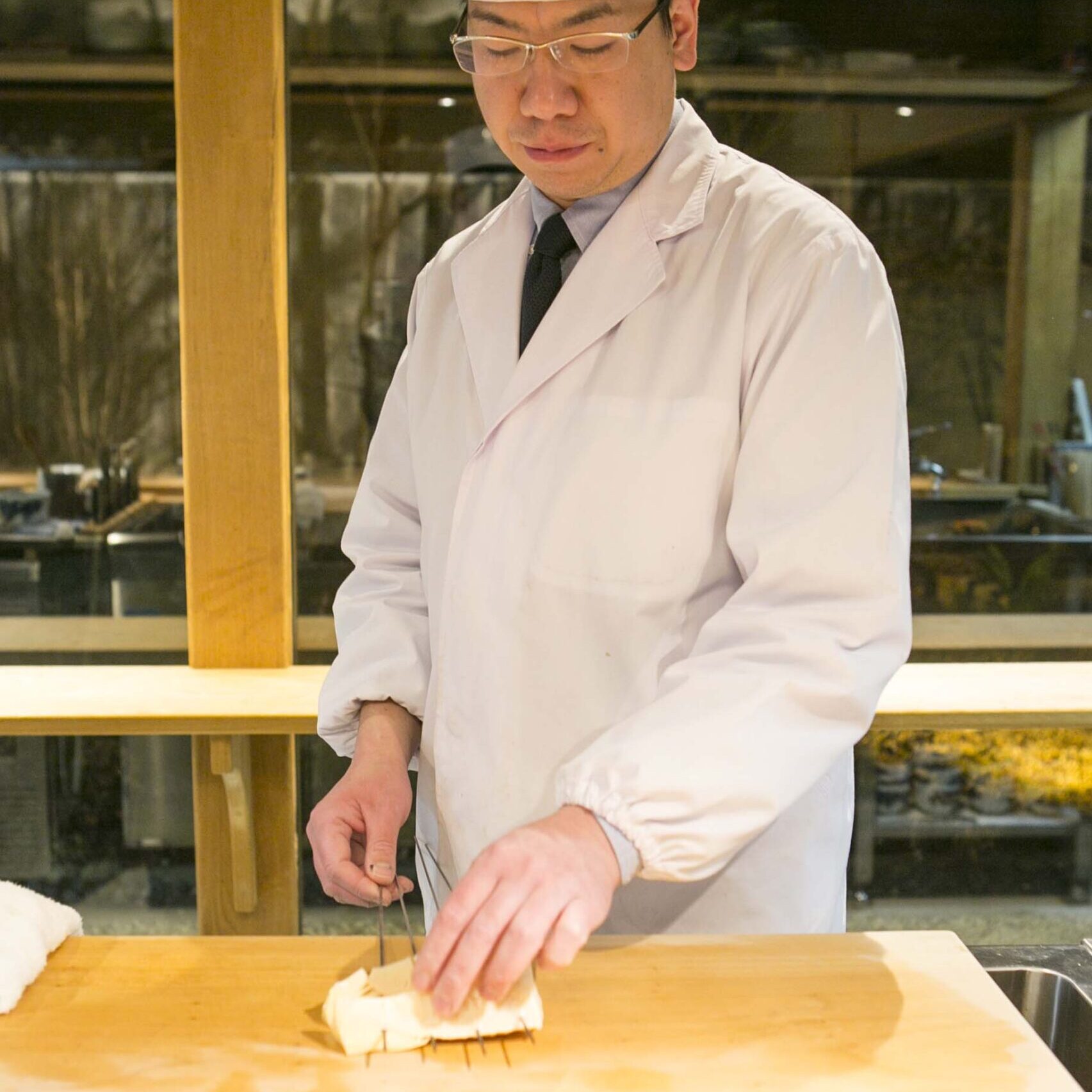
Oi|大井宿
Ena city
Rural experience in Terraced rice paddies.
Experiencing Japanese rural lifestyle with farm stay, guide walk, and food experience in the Sakaori Terraced rice paddies.

Shitakaido Trail – From Oi-juku to Mizunami.
A walking tour along the Shita-kaido road connecting Oi-juku and Nagoya.
Along the way, you’ll take a break at a Kamado Brewery (craft beer factory), enjoy the tranquil countryside scenery on the way to Nakashima Jozo sake brewery, and have dinner at the brewery.
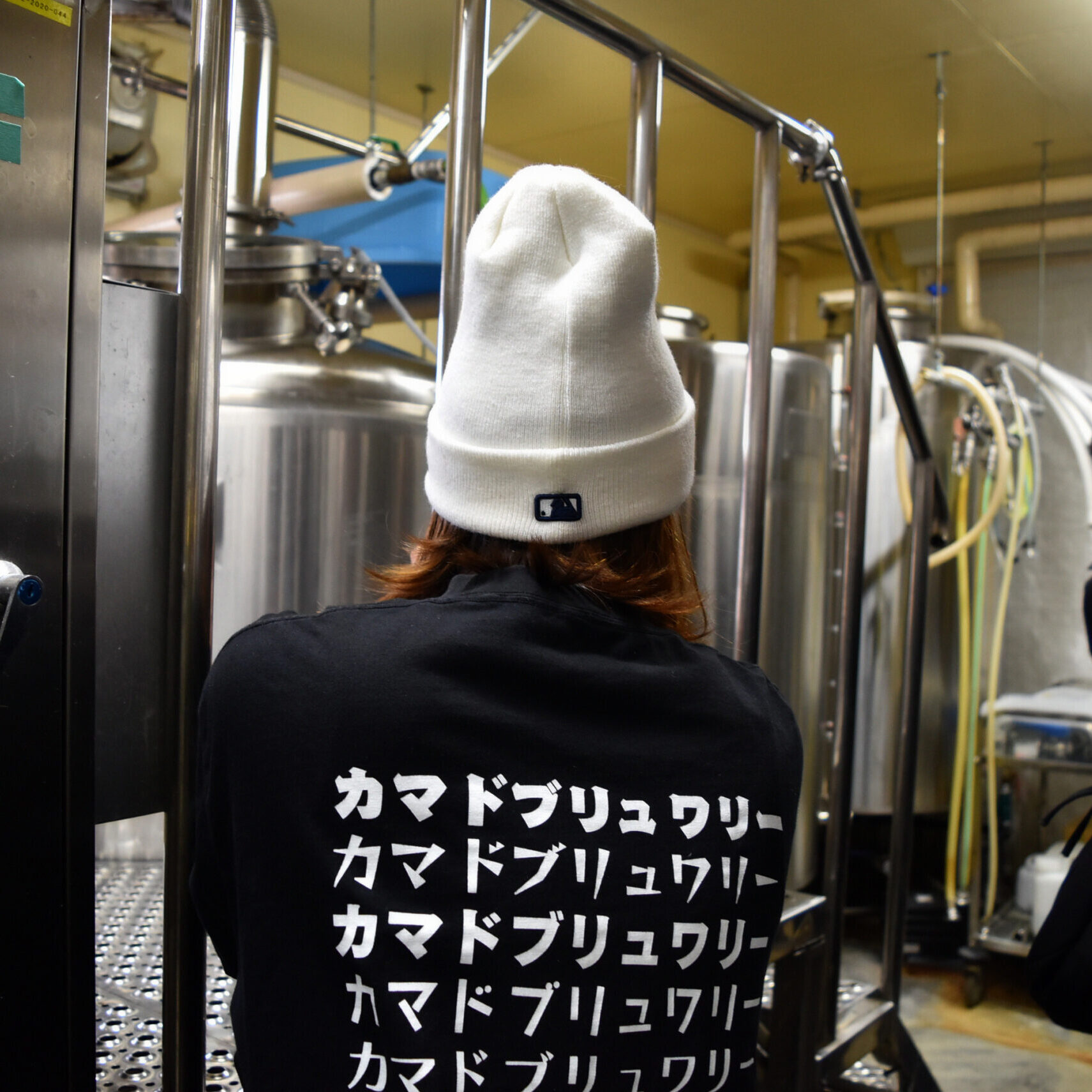
Okute|大湫宿
Mizunami city
Mino Pottery Making Experience with Ceramic Artists.
Under the guidance of a seasoned potter, you will have an authentic Mino ware pottery-making experience, starting from selecting the cray.
Craft original designs, such as making Chawan (tea bowl) that can be used in the tea ceremony, while also learning about the philosophy behind the designs.

Visiting a ceramic artist who explores traditional Japanese beauty
On the tour, you will visit a traditional Japanese house with a thatched roof and a pottery studio with three climbing kilns. You will also meet the ceramic artist Kondo Seiko, who is continuing a movement to revive traditional Japanese beauty that began in the early Showa period (early 20c.), and touch his collection, as well as the lifestyle and philosophy of ceramic artists..
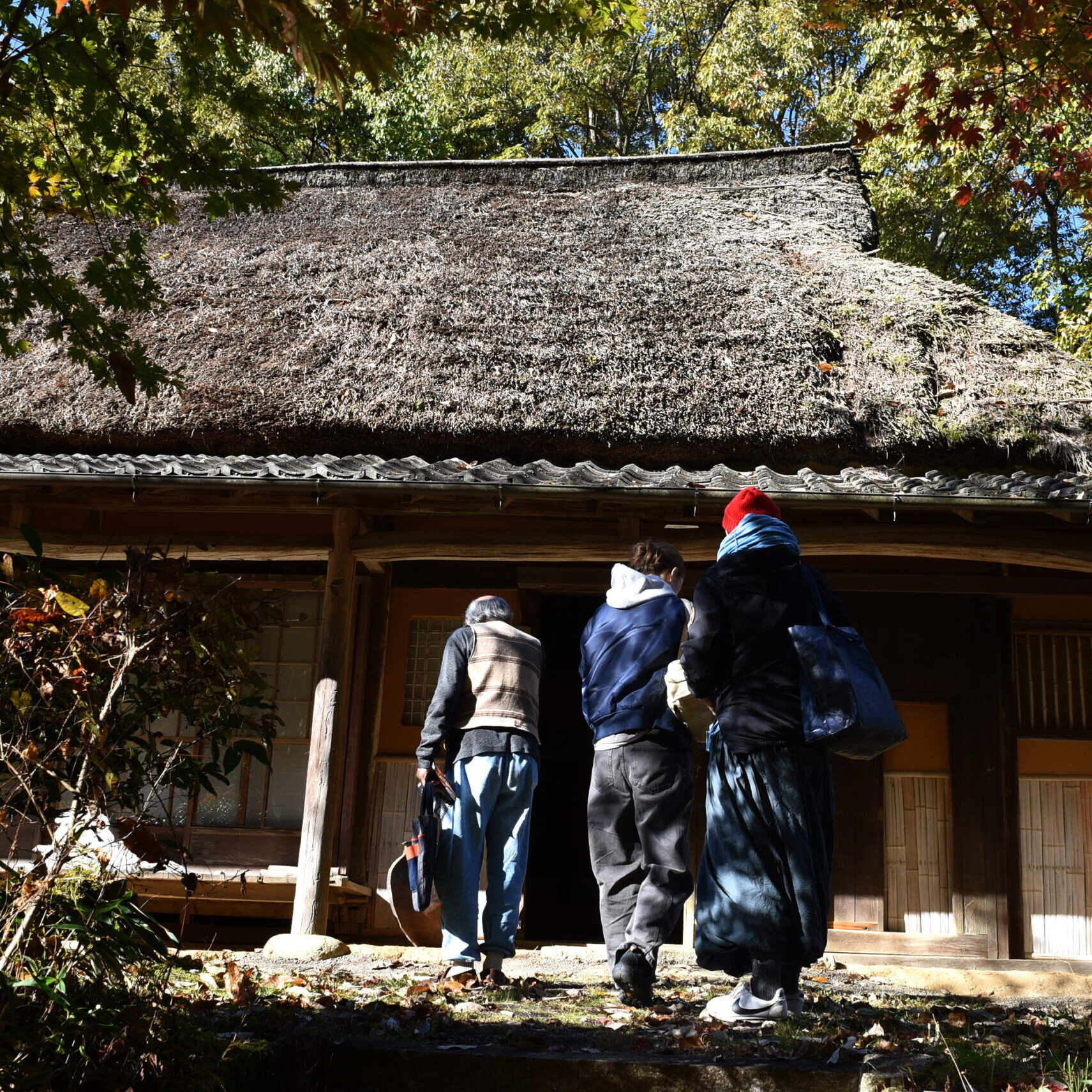
Visiting Mino ware as a modern industry
Toki City is one of Japan’s leading ceramic production areas, thanks to its abundant natural resources that serve as materials for ceramics.
This is diverse, ranging from the fields of art and crafts, such as traditional crafts and contemporary art, to small- and large-scale industrial pottery production
The tour will visit an industrial ceramics factory, with tours and dialogues.

Unuma|鵜沼宿
Kakamigahara city
Kisogawa Ukai – Observing the traditional cormorant fishing method on the Kiso River.
Observe the traditional fishing method of Ukai (cormorant fishing) with getting a boat in the middle reaches of the Kiso River between Unuma and Inuyama and.
With a view of Inuyama Castle, fishermen called Usho (cormorant fishermen) lighting a fire and guide the cormorants to fish..

